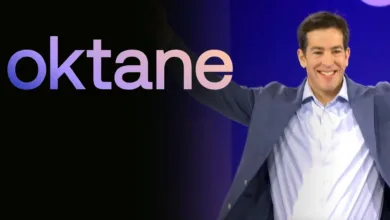Mistral API Now Powers AI Agents for Python, RAG & Image Generation

▼ Summary
– Mistral AI launched its Agents API, enabling developers to integrate autonomous generative AI capabilities into applications using the proprietary Mistral Medium 3 model.
– The API addresses limitations of traditional LLMs by supporting real-world tasks, persistent memory, and dynamic orchestration of multiple agents.
– Key features include built-in connectors for code execution, image generation, document access, and web search, enhancing accuracy and functionality.
– The API is proprietary, marking a shift from Mistral’s earlier open-source models, which has sparked debate in the AI community.
– Pricing varies by feature, with costs for tokens, connectors, and enterprise plans, making budget planning essential for adoption.
Mistral AI has unveiled a powerful new API designed to bring autonomous AI agents into enterprise and developer workflows with unprecedented ease. The Agents API enables seamless integration of generative AI capabilities into existing applications, powered by Mistral’s proprietary Medium 3 model—a high-performance foundation for building intelligent, task-oriented agents.
Unlike conventional language models limited to text generation, Mistral’s solution focuses on real-world execution, offering built-in connectors for Python code execution, image generation, document retrieval, and web search. Developers can now deploy AI agents that not only converse but also perform actions—whether analyzing financial data, automating coding tasks, or generating marketing visuals.
Key features include:
- Stateful conversations that retain context across interactions
- Dynamic orchestration of multiple agents for complex workflows
- Secure Python execution for data science and technical applications
- High-accuracy RAG (Retrieval-Augmented Generation) with enterprise document libraries
- Web search integration, boosting factual accuracy from 23% to over 80% in benchmark tests
For enterprises, the API eliminates the need for fragmented tooling by providing pre-built connectors to external APIs, databases, and cloud storage. This reduces development overhead while maintaining security—a critical factor for industries like finance and healthcare.
However, Mistral’s shift toward proprietary models has sparked debate. While earlier releases like Mistral 7B were open-source, Medium 3 and the Agents API operate under a closed licensing model. Some developers argue this limits customization, though Mistral emphasizes enterprise-grade security and managed scalability as trade-offs.
Pricing is usage-based, with costs scaling per API call—$0.4 per million input tokens for Medium 3, $30 per 1,000 web searches, and $100 per 1,000 generated images. Enterprise plans include advanced features like SAML SSO and custom connectors, though exact pricing requires direct consultation.
The release follows Mistral’s recent Le Chat Enterprise launch, reinforcing its focus on secure, deployable AI solutions. With competitive coding benchmarks and multilingual support, Medium 3 is positioned as a cost-efficient alternative to larger models.
For technical leaders, the Agents API presents a compelling option—faster deployment, built-in integrations, and persistent memory—but the proprietary framework may require careful evaluation against open-source alternatives. As AI agents evolve beyond chatbots into workflow automation, Mistral’s latest offering could redefine how businesses operationalize generative AI.
(Source: VentureBeat)





